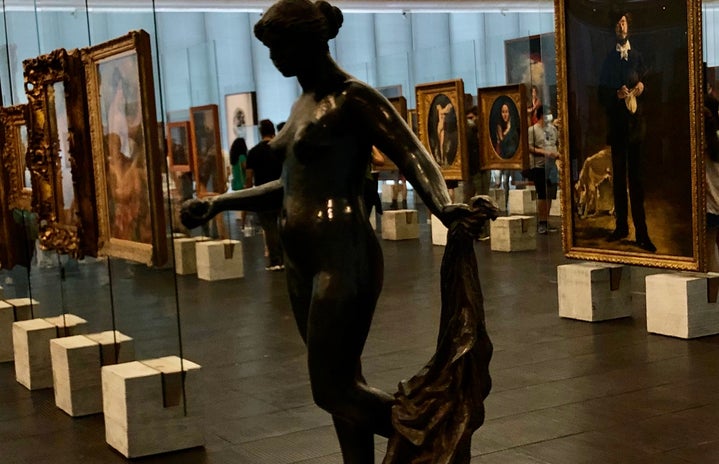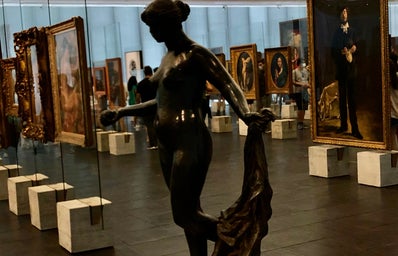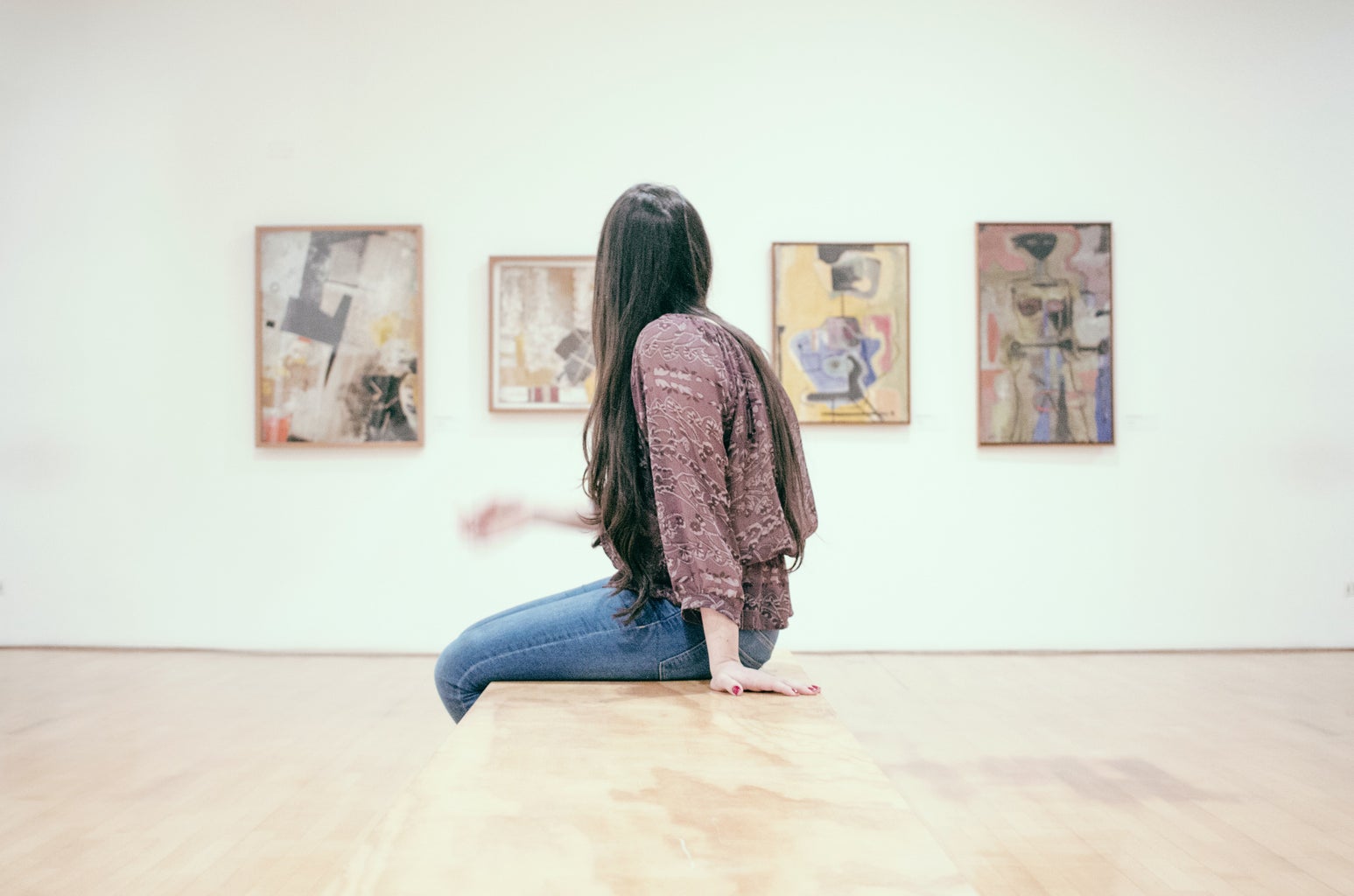It’s not common to come across a piece of art done by a woman in museums, expositions, in the media, in art history books, and, even, in art classes. That is explained by the patriarchal base our society has been structured in. Check here 5 facts that prove the existence of sexism in the art sphere.
- The Art Academy started accepting women just at the end of the XIX century in Brazil
-
The female contribution and presence in the Art Academy were denied until the 1880s in Brazil, when Liceu de Artes e Ofícios, Academia Nacional de Belas Artes, and other schools of art opened to women’s studies. However, even without being recognized, women were already on the art side: “There is a Caravaggio’s studant, called Artemisia Gentileschi, who has overcome her master, why don’t we recognize her?”, provokes Lucas Bocatto, art teacher pos graduated in the history of art, from São Paulo.
- The idea that art production is not appropriate for women
-
The treatment women received in the production of art is something we can explore by looking at Simone de Beauvoir’s ideas, who was the first philosopher who studied women’s place in western society. In her book “The Second Sex”, Beauvoir defends that there are just three places that a woman can assume: the narcissistic (the one who can just work for a man), the mystic (the one that has a goddess aura, the virgin, the angel) and the lovely (the one who gives love, takes care of her husband and children).
This way, every woman that didn’t follow this pattern, the ones that tried to have intrinsic value and recognition, such as the Italian painter Artemisia Gentileschi, didn’t achieve the success and recognition they deserved. According to the Brazilian philosopher Eloisa Benvenutti, “women have been concealed from the knowledge, as well as from the philosophical and artistic campus”.
- The idea of womEn’s beauty pictured in visual art
-
If we bring up some important paintings done before Modernism in western society, it’s hard to find one that presents a woman out of what was considered the pattern of beauty. On its majority, the white, curvy, and rich woman is pictured with a goddess and idealistic aura. “It happens because when a man is painting a female image, he takes a symbolic possess of her body and creates a visual model, that represents just one female ideal”, points out Vanessa Bortulucce, a History professor master’s in History of Art by the University of Campinas, in São Paulo.
This idea of beauty present in a big side of famous art has been taken for granted and when a painting as “Origin of the World”, by Gustave Courbet, a famous French artist, comes up with a real woman pictured, the public repudiates it. The same thing occurs when we think about black, poor, and indigenous women, the ones that are misrepresented in art and started to gain power just when the Modernist Movement came up, around the beginning of the 20th century.
Trying to review the idea of women sold by the “big” paintings, Pinacoteca, a prestigious museum in São Paulo, has done an exposition called “Collective Body”. It has the goal of “showing different bodies, trying to reveal and fight the violence they were submitted in misrepresentation, proposing new points of view”.
- “She is his wife”
-
Being a female artist, in itself, is already a title that carries strength and empowerment in abundance, as it entails an incessant struggle for recognition. Now imagine adding to that battle, the effort to stand out when you’re seen only as of the wife of a famous painter. This was the adversity faced by renowned names such as Mercedes Pardo, Lola Álvarez Bravo, Berthe Morisot and Marie Bracquemond, married respectively to Alejandro Otero, Manuel Álvarez Bravo, Eugène Manet (Édouard Manet’s brother) and Félix Bracquemond. In the case of the latter, the couple’s son, Pierre, tells in his writings that his father overshadowed his mother’s work, did not show the canvases to visitors, and discouraged her from painting.
These amazing women made great contributions to Abstract Art, photography, and Impressionism. But, mostly, they were overlooked by the patriarchal society. They had the arduous task of imposing themselves on their husbands and conquering their space as autonomous artists in it.
- Women are in museums just because of their undressed body
-
We probably have already come across the work “The Birth of Venus”, by Sandro Botticelli, and were amazed by the seductive proportions of the central muse’s body. The richness of details in her nudity gives life to a painting that combines delicacy and a touch of eroticism. Under this bias, the work should be recognized for the enchantment it causes in the spectator, and for its precision of details. However, unfortunately, in a society whose art history has been structured in a sexist way, this is not the case. Not only “The Birth of Venus”, but countless other works that portray women earn their recognition strictly through nudity, acting as a den of fetishization of the female body.
The group of anonymous women artists “Guerrilla Girls” touched on this problem by exhibiting at the São Paulo Museum of Art (MASP) a work that contains a question to reflect on: “Do women need to be naked to enter the São Paulo Museum of Art?”. “I think their proposal is very nice because it takes you out of your comfort zone. It is interesting because they are taking the issue of nudity. ‘Why do I have to be undressed to be in a museum?’ It’s a matter of fetishization, idealization of the woman’s body”, adds Professor Bortulucce, explaining that eroticization and sensuality are often reasons that lead to the fame of a painting whose retraction is of the woman.
How can we face sexism on the art side?
“The curator has the function of putting together thematic exhibitions that make us reflect on those works in which women were considered objects and not subjects”, explains Lucas Bocatto. However, it is known that the practice of this reflection in museums is not as present as it should be. When asked about the purpose of the Guerrilla Girls’ work at the São Paulo Museum of Art, Bortulucce explains that she sees it as a means by which women hide, to focus the public’s attention on the works.
From the point of view of these specialists, it is clear that the museological organization still demands a reformulation of values. They need to add more female artists to the collection, from the most renowned to those who lack fame, as well as knowing how to exhibit paintings that portray female nudity. “Museums must make apparent the sexualization and objectification, or even idealization of the female body”, completes Bocatto.
——————————————-
The article above was edited by Amanda Moraes.
Liked this type of content? Check out Her Campus Cásper Líbero’s home page for more!



